What to do with miserly cash and bonds
Investors are understandably fleeing cash and bonds in response to inadequate yields, poor prospective returns and government monetary and fiscal policies. The narrative of “There is No Alternative” (TINA) is rampant as investors look to equities as the go to asset class for a significant proportion of their capital. Unfortunately, this appears imprudent and could even potentially prove entirely mistaken.
In this article we explore the critical mistake investors are making in thinking “There is No Alternative” when considering their asset allocation, and reveal a real emerging alternative to low cash and bond rates. We explore how this alternative is essential to good investing, but also incredibly prospective in terms of meeting prudent absolute return investor objectives, and provides a less risky option to being all in on risk assets.
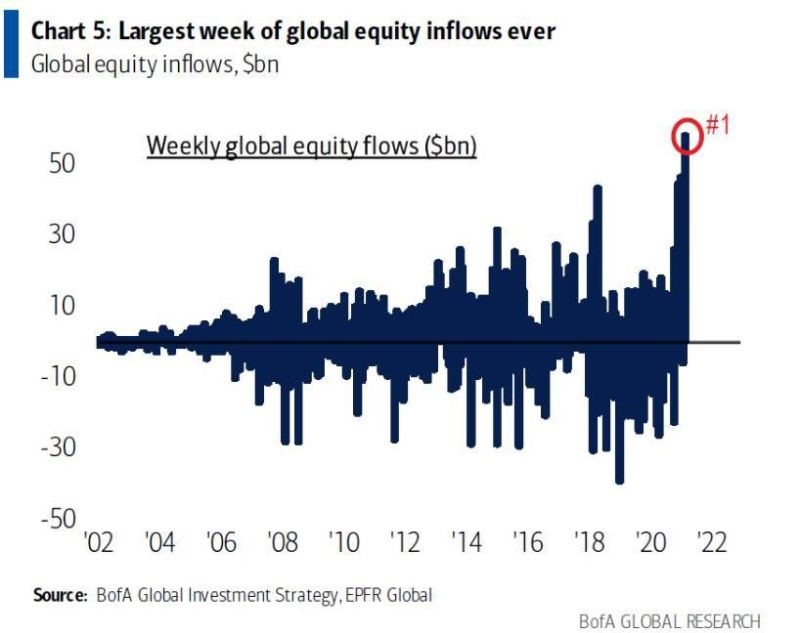
Why cash and bonds are on the nose
Many investors and institutions allocate their assets among some combination of the following asset classes: cash, bonds, property and equities, in line with their perceived risk profile and investment mandates. Cash and bonds are the traditional defensive assets, and property and equities are the traditional risk-on or growth assets. The traditional 60:40 portfolio, or a similar variation, is used as a rather passive and lazy basis for portfolios for institutional investment management for the last 40 years; it is comprised of 60% equities and property, and 40% cash and bonds. It has been effective historically at producing modest risk-adjusted returns as it has benefited across the board from disinflation and lower interest rates, which has been a structural trend since the early 1980s. But now that cash rates have gone all the way to zero (0.1% in Australia) and bonds have a circa 1% yield, history will simply not be able to repeat itself in coming years. It is also entirely realistic that we may even see the reverse happening as inflation and interest rates begin to rise.
In contrast to seeing the lovely tailwind for all traditional assets and traditional portfolios, we may very realistically see a significant and adverse macroeconomic headwind in coming years. These asset classes are not priced for this to occur as they - and consensus - are dominated by passive investors who are largely trend following in nature, and who buy irrespective of the value. This is evidenced by the exponential growth of passive ETFs that predominantly track a market benchmark. If the massive structural trend changes, traditional assets and portfolios can be expected to lose from the change in a big way.
Most notably, higher inflation is terrible for most non-inflation indexed bonds (and long duration assets). Higher discount rates would also challenge highly elevated property and equity valuations that are dependent on low discount rates. Some of these growth assets are arguably deeply divorced from fundamentals because of the TINA mantra and a broad consensus belief that central banks can be relied upon to keep interest rates low “forever”.
There are credible forecasts such as Hussman (see chart below), that equities may not provide the high returns investors are generally expecting. Cash and bonds – even with low-interest rates - are priced to provide inadequate returns to meet even modest return expectations. Investors are hence needing alternative investments with greater return prospects and different, rather than common, drivers of return and risk.
Predicted and Actual Returns on Conventional 60/30/10 Portfolios
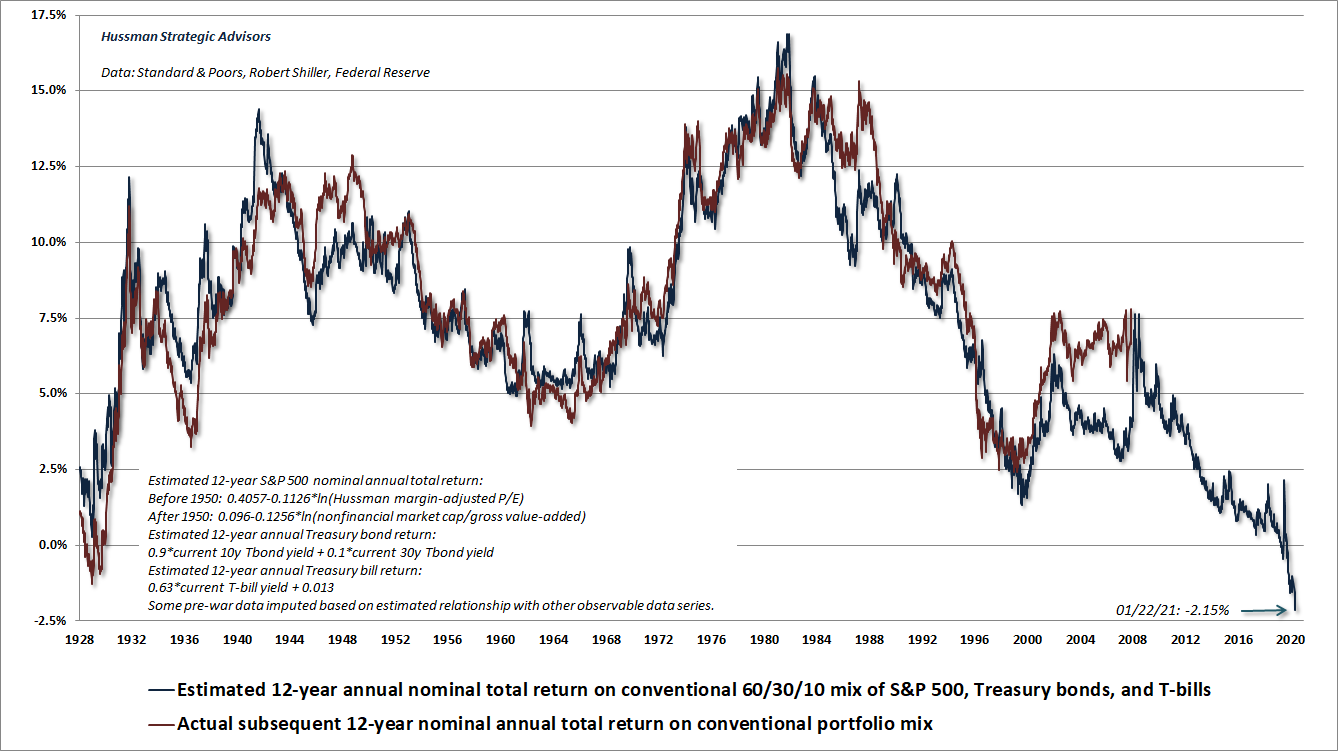
Source: Hussman Funds
Bonds have often been included in a portfolio for their diversification benefits, on the view that they will perform well when equities underperform and hence lower the large risk from being only in equities. However, this relies heavily upon bonds having a negative correlation with equities. Unfortunately, history tells us even this cannot be relied upon - and given starting yields and key portfolio risks such as inflation and higher yields today - we should not rely upon bonds being diversifying, as they may not be.
Long Term US Bond vs. Equity Correlation
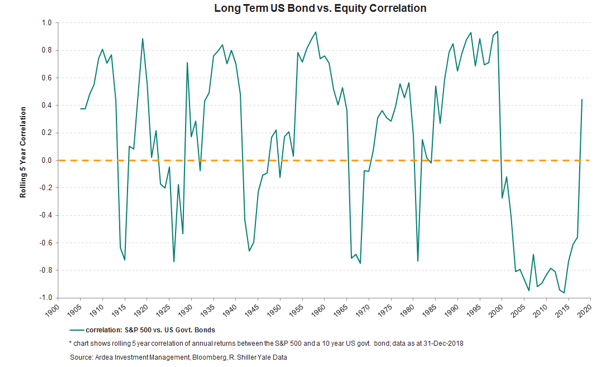
Source: Ardea Investment Management, Bloomberg. R. Shiller Yale Data
There are many times in history when bonds simply do not diversify equity risk, most particularly when inflation rises and long-term interest rate expectations rise too fast or above critical levels. Given current government policy around the world is to print and spend with abandon until we get inflation or some other calamity, inflation as a risk should clearly not be ruled out. Disinflation should simply no longer be relied upon as the basis to build an entire portfolio, which as an aside basically completely invalidates most passive portfolio approaches. Paradoxically, these portfolios or index focused investment styles are more popular than ever!
We know from watching central banks for a very long time that their prognostications about future interest rates and inflation have routinely been incorrect.
In contrast, they can be somewhat relied upon to follow the market when market conditions push them to do so. They are also influenced by banks and other market participants pushing them around publicly and otherwise when it suits them – indeed we know of at least one activist fund manager that does this to the RBA (and presumably he does so because he thinks it is effective). One of the greatest fallacies we commonly hear propagated is that central banks control our economies and determine growth and inflation and other economic settings. Put simply, we don’t believe there is any compelling evidence to suggest they control these. Hence, don’t assume they do.
Systematic Forecast Errors for the Fed Funds Rate, 2008-2018
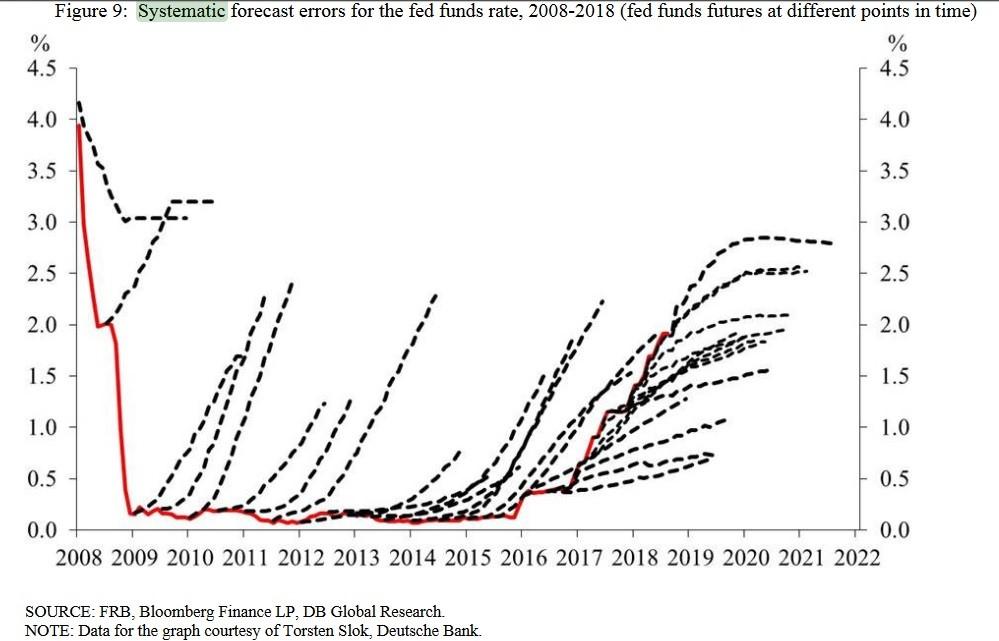
(Fed Funds Futures at Different Points in Time)
Whether you stick with the traditional portfolio or move more into equities, if you are constrained to traditional long only assets, you will probably end up with a much riskier and lower returning portfolio today than you had before. Bonds may no longer protect and diversify, and equity risk is escalating with the nature of the investors in equities and higher valuations bringing down future return forecasts. There is certainly plenty to be concerned about contrary to consensus (and I haven’t even mentioned Taiwan).
Expect a paradigm shift
We can see rampant signs of speculation in equities, and the period we’re living through is very reminiscent of late 1999. For instance, there is massive call volume bidding up the prices of the worst quality and most shorted stocks in the market (see diagram below), as well as less shorting in markets than we’ve seen for a very long time. We could potentially see continuing rises inequities driven by price-insensitive buyers such as index investors and speculators, before a massive market collapse similar to 1987 or early 2000 when the trend reverses. This is what happens in bubbles – they become removed from fundamentals, escalate, last longer than anyone expects, and then – often with unpredictable timing - they collapse.
Bidding up the Prices of the Worst Quality and Most Shorted Stocks in the Market
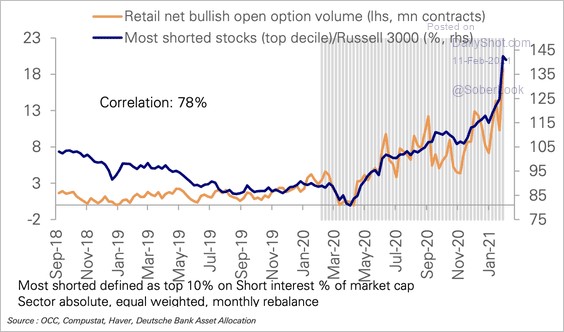
We have not had high and increasing inflation for decades. It should hence be clear that while “this time may not be different”, it is very different from the time period which most investors, advisers and institutions have worked through. Importantly, some advisers and institutions are inflexible and hopelessly ill-equipped to manage well anything other than a rising market.
The real question is not what short-term return will be achieved while the bubble inflates, but whether your assets are being risk-managed and what your compounded return is over time when markets turn south. Given many investors are doing exactly what they did in early 2020 when we last witnessed great market complacency, it may be instructive to see what happened to your portfolios in early 2020; how badly was your approach hurt from a market crisis and how quickly did your approach recover from these falls (if at all?).
Prima facie, it seems prudent investors may be better served reducing risk when risk-loving is rampant, or at least not increase their exposure, even though it may be very exciting - far from increasing equities and risk assets into escalating prices and speculative mania. This is even more important for conservative investors or for those who can’t tolerate large losses. It is very difficult to tell when the music will stop, so playing musical chairs with dangerous markets will clearly not suit more conservative investors who are averse to large drawdowns.
We do not argue against owning equities selectively; indeed, we can still identify numerous pockets of attractive opportunities for active and well-researched investors. But there is definitely a real need for:
- great active management
- a risk management focus
- differentiated portfolio management.
Why modest portfolio management trumps Modern Portfolio Theory
The only thing we know for sure is that we don’t know for sure. It is crucial - no matter what we believe about anything – that we diversify our portfolios and our risk-taking. Of course, we can and should make meaningful probability-based assessments about the future, and if you are good at this we can do so with some accuracy, but we should never forget that we can’t predict the future per se. The main reason to be confident in my (or another) portfolio is not only because my research and judgements or opinions are accurate or useful, but that I will be sensibly diversified among numerous attractive active strategies. This diversification is no longer available in a portfolio by simply buying bonds to offset equities, or indeed by owning a few typical equities.
By being better diversified, you narrow the range of realistic return outcomes and create a better, more consistent and more tolerable journey for your capital and peace of mind.
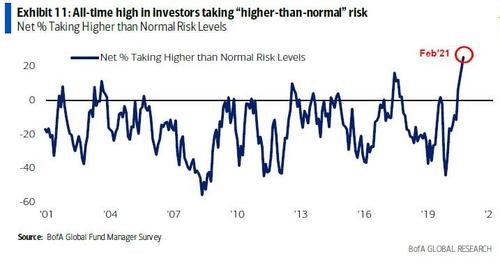
The “TINA” alternative crowd is overly narrow in its focus and overly confident by definition. There are in fact many alternatives out there other than simple equities. And in no small part because of all the inefficiencies and craziness in markets today, some of these alternative strategies are extremely promising and attractive investments – we consider many to have more than 10% outperformance potential compared to more commonly held investments. These opportunities are scarce and not easy to identify, and will routinely be overlooked by the mainstream because they require a specialist skill set, training and specialisation to invest in well. Simply buying any alternative is no guarantee of success. Wholesale investors – such as those with SMSFs - have the potential opportunity to access the best alternatives because they are often only made accessible to wholesale investors. Wholesale investors should hence ensure that they are not missing out on these opportunities, or being treated as a retail investor and realising much lower risk-adjusted returns than they should be.
For those who can put themselves in a position to access it, a well-run and actively managed diversified Alternative portfolio is a truly great alternative to being all in on anything. Its results are also measurable and should speak for themselves over time with superior risk adjusted returns. It is a better way to reduce cash and bonds without being overly concentrated to the same risks, as well as a great complement to investors’ existing property portfolios. It is not without any risk - nothing is - but importantly it has different risks and diversification greatly helps mitigate the risk of any individual strategy.
While alternatives help reduce portfolio risk, they don’t have to mean low returns.
And in fact, many investors actually want an active alternatives portfolio with an absolute return objective. It is designed around what matters most to many investors and quite possibly to you too as an investor. It targets lower volatility, lower drawdowns, and double-digit returns per annum, which is much higher than a traditional portfolio can expect - despite the lower market risk. It can even massively outperform equities as I did last year, particularly over a full cycle, given its lower drawdowns facilitate better long-term compounding. It has real return prospects unlike those of cash and bonds and its drawdowns should be tolerable and relatively quickly recovered from. The greater consistency, smoother return profile and quicker recovery from drawdowns have real benefits to investors, as it protects investors from buying high and selling low - which we know they are prone to do with many other strategies. It removes the fear factor of buying at the wrong time and immediately being exposed to large losses from a market collapse.
Investment behaviour needs to adapt and alter in line with changing market circumstances for investors to thrive and survive going forward. Traditional assets now have low long-term return prospects, and could do anything in the short-term. There is a desperate need for a better-diversified portfolio in a world of potentially rising inflation. While cash and bonds offer poor return prospects, and the need for alternatives is clear, being overly concentrated in long-only index-like equities at a time of great speculation could easily be considered imprudent, unprofessional or at the very least, overly confident.
A better-diversified portfolio provides different sources of returns to investors, including substantive and meaningful active management. It provides investors with much-needed exposure to incredibly attractive, differentiated, unique and non-market dependent opportunities.
Although there is more than one alternative, it is the alternative that matters and which is necessary today.
Not already a Livewire member?
Sign up today to get free access to investment ideas and strategies from Australia’s leading investors.

